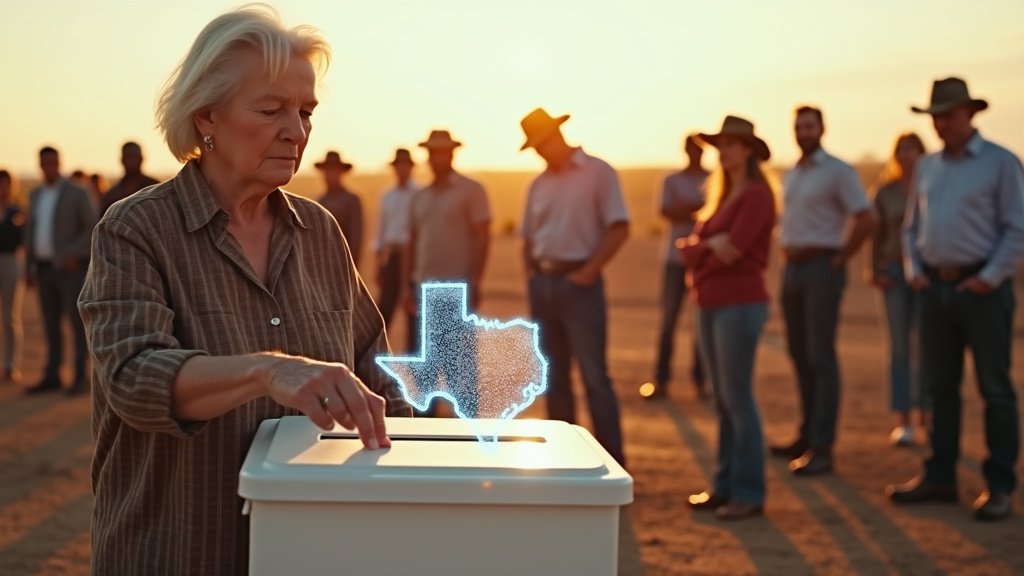Texas on the Brink: Voters to Decide Fate of $20 Billion Water Security Initiative
Featured on the November 4, 2025, ballot, Texas voters will cast their ballots on a landmark constitutional amendment that could direct $20 billion towards securing the state’s water future. This substantial investment aims to tackle the mounting water challenges posed by relentless population growth, aging infrastructure, and the escalating impacts of drought and climate change. The outcome of this vote will shape the availability of water for millions of Texans and the continued economic prosperity of the Lone Star State.
The Looming Water Crisis in Texas
Texas is experiencing unprecedented growth, with its population projected to surge significantly in the coming decades. This expansion places immense strain on the state’s finite water resources. Compounding the issue is an aging water infrastructure, with billions of gallons lost annually due to leaks and system failures. Projections from the Texas Water Development Board indicate a potential shortfall of 5 to 7 million acre-feet of water by 2070 if decisive action is not taken. Experts estimate that Texas needs a staggering $154 billion by 2050 to adequately address its water supply and infrastructure needs. Without substantial investment, the state could face severe water shortages by 2030, particularly if a major drought strikes, potentially costing the economy hundreds of billions and millions of jobs.
A “Texas-Sized” Investment: Proposition 4 Explained
House Joint Resolution 7, now Proposition 4 on the ballot, proposes a constitutional amendment to dedicate a portion of state sales and use tax revenue to the Texas Water Fund. If approved by voters, this measure would allocate up to $1 billion annually from existing sales tax revenue for 20 years, beginning in 2027 and concluding in 2047, totaling a $20 billion investment. Crucially, this initiative does not involve new taxes for Texans.
The allocated funds are earmarked for a dual approach: roughly 50% will be dedicated to developing new water supplies, including innovative strategies like desalination, water reuse (including produced water from the oil and gas industry), and brackish water treatment projects. The remaining 50% will address critical infrastructure needs, such as repairing and replacing aging pipes, upgrading wastewater systems, and investing in flood mitigation projects. The Texas Water Development Board (TWDB) will administer these funds, prioritizing projects that offer the greatest benefit to the state.
Legislative Momentum and Broad Support
This historic proposal is the culmination of efforts by state lawmakers, including Senate Bill 7 and House Joint Resolution 7, signed into law by Governor Greg Abbott. The legislation builds upon the foundation laid in 2023, when voters approved the creation of the Texas Water Fund and an initial $1 billion appropriation. Supporters, including business leaders and advocacy groups, emphasize that securing reliable water infrastructure is essential for maintaining the “Texas Miracle”—the state’s sustained economic growth and job creation. Polls indicate strong voter support for Proposition 4, with many recognizing the necessity of investing in the state’s water future.
Looking Ahead: A Crucial Decision for Texas
While the $20 billion package represents the largest generational investment in Texas’ water infrastructure in state history, it is understood to be a significant step rather than a complete solution to the estimated $154 billion in long-term needs. Nevertheless, proponents argue that this measure is critical for addressing immediate threats and laying a foundation for future water security. The vote on Proposition 4 is more than just a financial decision; it is a choice about the long-term viability of communities, industries, and the overall quality of life in Texas. As this news unfolds, Texans are poised to make a critical decision that will impact generations to come.






